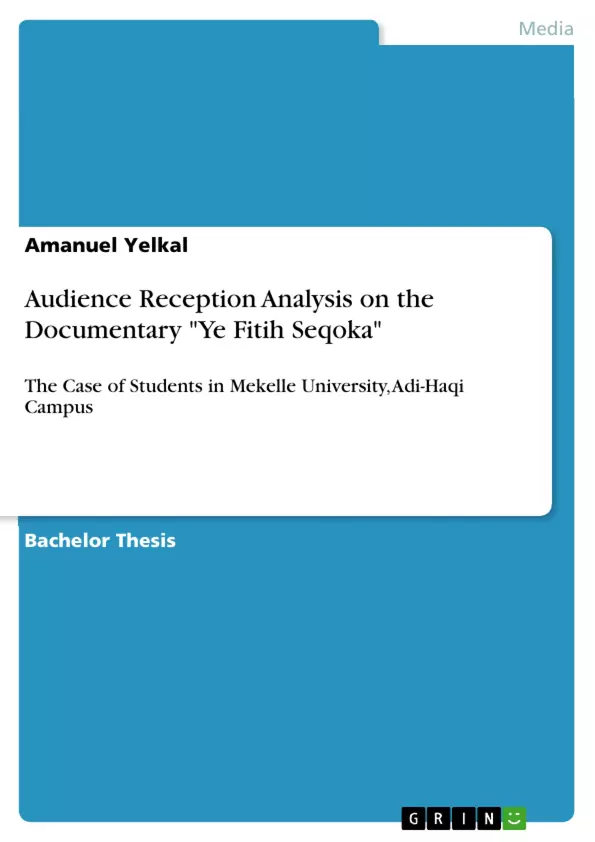On December 11, 2018 three Ethiopian television channels (ETV, Fana Tv and Walta Tv) broadcasted a documentary titled "Yefitih Seqoka" which narrated about human right violations committed on prisoners by prison administrators. Following its transmission the documentary immediately became a matter of great debate and discussion both online and offline. The tension, the rush and the Facebook hash tags that went viral were the motivations behind the selection of this topic for a study. The aim of the study was to assess how the audience interprets the messages transmitted by the documentary "Yefith seqoka".
"How students interpret the message of the documentary film?"; "How students react after watching the documentary?" and "what is their thought on representation of subjects in the film?" are the questions that the study aims to answer.
Qualitative research method was employed to answer the above research questions. As the method is most often associated with reception analysis, which is the focus of the study, two qualitative data collection methods were used. They are focus group discussions with students of Mekelle University, Adi-haqi campus and interviews with lecturers of journalism and communication. Convenience and purposive sampling methods were utilized to select the necessary samples for the study. To analyze the collected data thematic data analysis method was used.
The findings indicate that the majority of the participants have agreed on that the messages and the representations of subjects in the documentary were negative and have no relevance to the sociocultural context of the country. Considering the findings of the study the researcher recommended that Representation of subjects in this kind of documentaries should be put in a way that avoids negative generalizations.
Table of Contents
- CHAPTER ONE
- Introduction
- Background of the study
- Statement of the Problem
- Objectives the study
- Research questions
- Significance of the study
- Scope of the study
- Limitations of the study
- CHAPTER TWO
- Introduction
- Audience Research
- Representation of media
- Documentary
- Role of media in Ethiopia
- Human Right in Ethiopian Media
- Conclusion
Objectives and Key Themes
This senior essay investigates the audience reception of the documentary “Ye Fitih Seqoka” by focusing on students at Mekelle University, Adi-Haqi Campus. The study aims to understand how these students interpret the messages conveyed in the documentary, their reactions after watching it, and their opinions on the film's representation of its subjects.
- Audience reception analysis
- Documentary film analysis
- Representation of subjects in media
- Interpretation of media messages
- Human rights and media in Ethiopia
Chapter Summaries
Chapter One provides an introduction to the study, outlining the background, problem statement, objectives, research questions, significance, scope, and limitations. It sets the stage for the research by explaining the context and rationale behind the study. Chapter Two delves into a review of relevant literature. It explores existing research on audience research, reception theory, representation of media, documentaries, the role of media in Ethiopia, and human rights in Ethiopian media. This chapter provides a theoretical framework for analyzing the documentary “Ye Fitih Seqoka”.
Keywords
The core focus of this study is on audience reception analysis, documentary film analysis, representation of subjects in media, interpretation of media messages, and the role of human rights in Ethiopian media.
- Citar trabajo
- Amanuel Yelkal (Autor), 2019, Audience Reception Analysis on the Documentary "Ye Fitih Seqoka", Múnich, GRIN Verlag, https://www.grin.com/document/495897



